Joshua Southern
Balancing Efficiency and Expressiveness: Subgraph GNNs with Walk-Based Centrality
Jan 06, 2025



Abstract:We propose an expressive and efficient approach that combines the strengths of two prominent extensions of Graph Neural Networks (GNNs): Subgraph GNNs and Structural Encodings (SEs). Our approach leverages walk-based centrality measures, both as a powerful form of SE and also as a subgraph selection strategy for Subgraph GNNs. By drawing a connection to perturbation analysis, we highlight the effectiveness of centrality-based sampling, and show it significantly reduces the computational burden associated with Subgraph GNNs. Further, we combine our efficient Subgraph GNN with SEs derived from the calculated centrality and demonstrate this hybrid approach, dubbed HyMN, gains in discriminative power. HyMN effectively addresses the expressiveness limitations of Message Passing Neural Networks (MPNNs) while mitigating the computational costs of Subgraph GNNs. Through a series of experiments on synthetic and real-world tasks, we show it outperforms other subgraph sampling approaches while being competitive with full-bag Subgraph GNNs and other state-of-the-art approaches with a notably reduced runtime.
The Helicobacter pylori AI-Clinician: Harnessing Artificial Intelligence to Personalize H. pylori Treatment Recommendations
Dec 07, 2024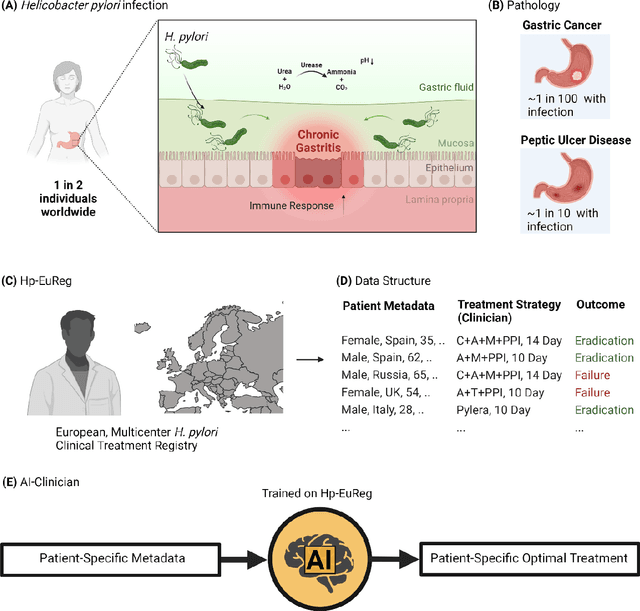
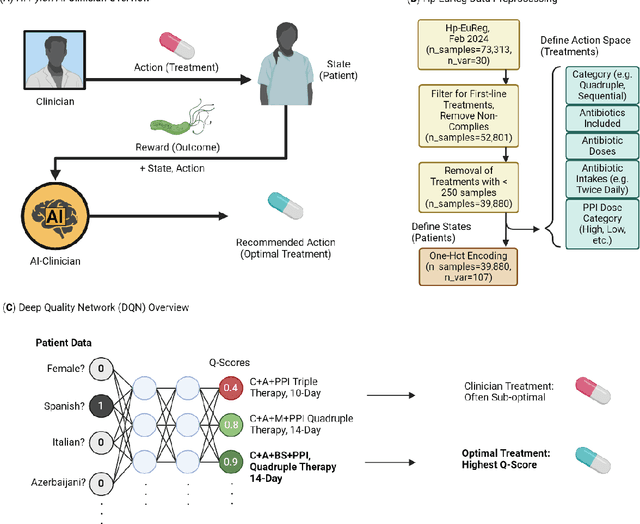
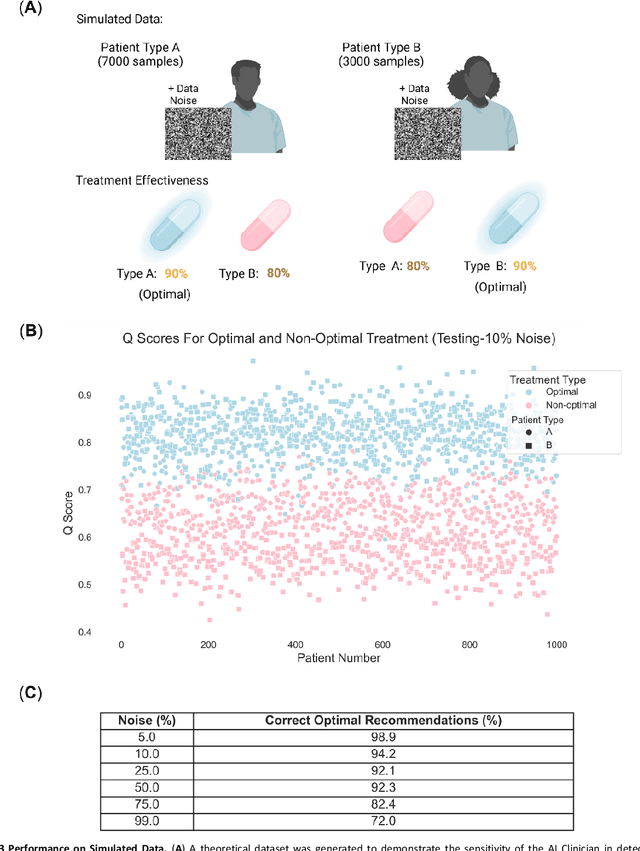
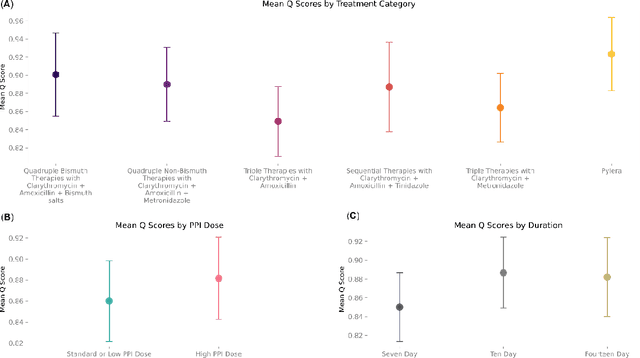
Abstract:Helicobacter pylori (H. pylori) is the most common carcinogenic pathogen worldwide. Infecting roughly 1 in 2 individuals globally, it is the leading cause of peptic ulcer disease, chronic gastritis, and gastric cancer. To investigate whether personalized treatments would be optimal for patients suffering from infection, we developed the H. pylori AI-clinician recommendation system. This system was trained on data from tens of thousands of H. pylori-infected patients from Hp-EuReg, orders of magnitude greater than those experienced by a single real-world clinician. We first used a simulated dataset and demonstrated the ability of our AI Clinician method to identify patient subgroups that would benefit from differential optimal treatments. Next, we trained the AI Clinician on Hp-EuReg, demonstrating the AI Clinician reproduces known quality estimates of treatments, for example bismuth and quadruple therapies out-performing triple, with longer durations and higher dose proton pump inhibitor (PPI) showing higher quality estimation on average. Next we demonstrated that treatment was optimized by recommended personalized therapies in patient subsets, where 65% of patients were recommended a bismuth therapy of either metronidazole, tetracycline, and bismuth salts with PPI, or bismuth quadruple therapy with clarithromycin, amoxicillin, and bismuth salts with PPI, and 15% of patients recommended a quadruple non-bismuth therapy of clarithromycin, amoxicillin, and metronidazole with PPI. Finally, we determined trends in patient variables driving the personalized recommendations using random forest modelling. With around half of the world likely to experience H. pylori infection at some point in their lives, the identification of personalized optimal treatments will be crucial in both gastric cancer prevention and quality of life improvements for countless individuals worldwide.
Understanding Virtual Nodes: Oversmoothing, Oversquashing, and Node Heterogeneity
May 22, 2024Abstract:Message passing neural networks (MPNNs) have been shown to have limitations in terms of expressivity and modeling long-range interactions. Augmenting MPNNs with a virtual node (VN) removes the locality constraint of the layer aggregation and has been found to improve performance on a range of benchmarks. We provide a comprehensive theoretical analysis of the role of VNs and benefits thereof, through the lenses of oversmoothing, oversquashing, and sensitivity analysis. First, in contrast to prior belief, we find that VNs typically avoid replicating anti-smoothing approaches to maintain expressive power. Second, we characterize, precisely, how the improvement afforded by VNs on the mixing abilities of the network and hence in mitigating oversquashing, depends on the underlying topology. Finally, we highlight that, unlike Graph-Transformers (GT), classical instantiations of the VN are often constrained to assign uniform importance to different nodes. Consequently, we propose a variant of VN with the same computational complexity, which can have different sensitivity to nodes based on the graph structure. We show that this is an extremely effective and computationally efficient baseline on graph-level tasks.
Curvature Filtrations for Graph Generative Model Evaluation
Jan 30, 2023Abstract:Graph generative model evaluation necessitates understanding differences between graphs on the distributional level. This entails being able to harness salient attributes of graphs in an efficient manner. Curvature constitutes one such property of graphs, and has recently started to prove useful in characterising graphs. Its expressive properties, stability, and practical utility in model evaluation remain largely unexplored, however. We combine graph curvature descriptors with cutting-edge methods from topological data analysis to obtain robust, expressive descriptors for evaluating graph generative models.
End-To-End Prediction of Emotion From Heartbeat Data Collected by a Consumer Fitness Tracker
Jul 16, 2019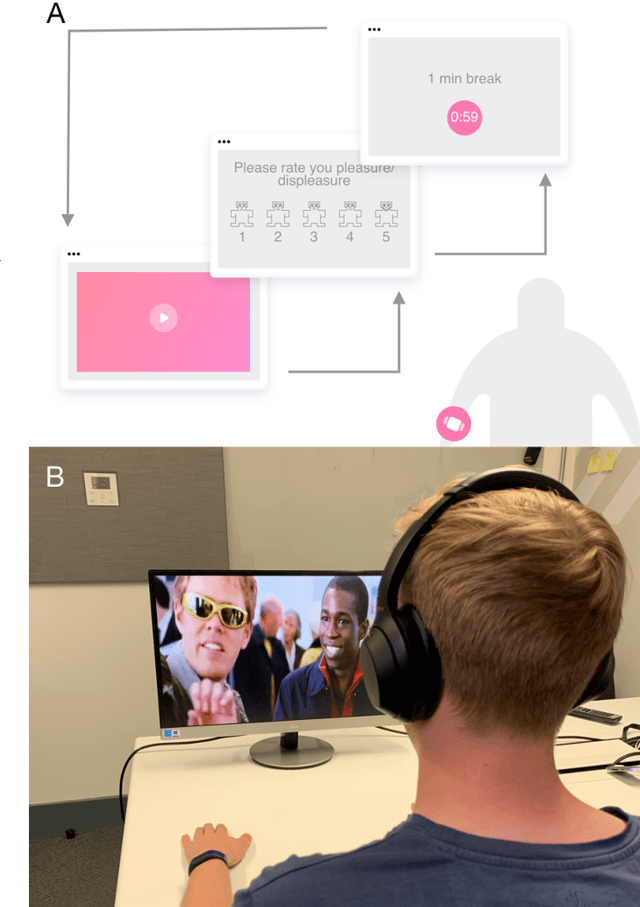

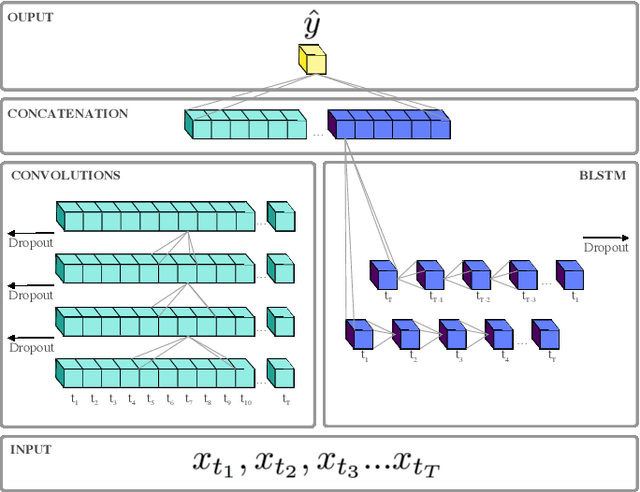
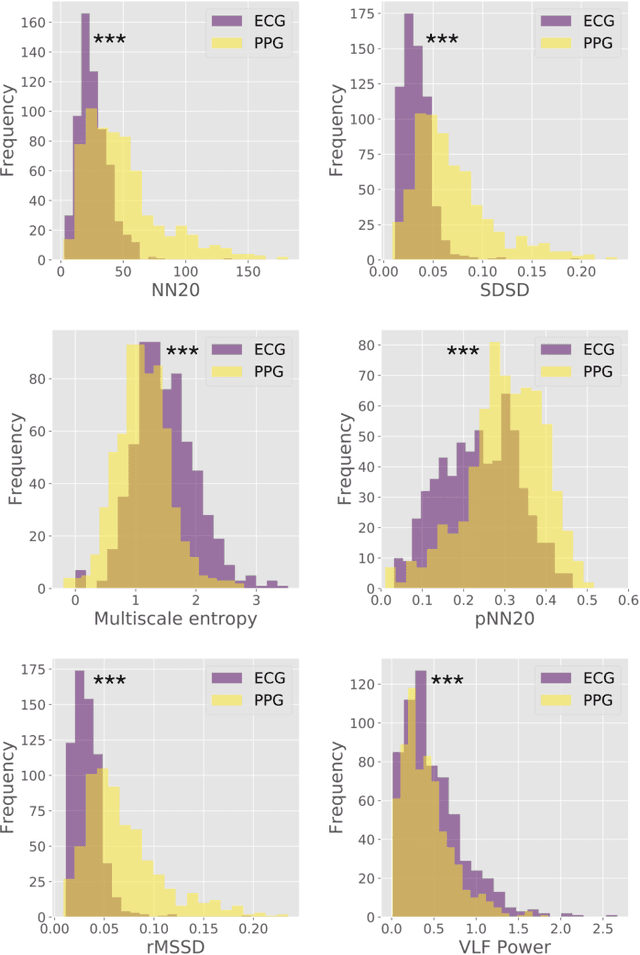
Abstract:Automatic detection of emotion has the potential to revolutionize mental health and wellbeing. Recent work has been successful in predicting affect from unimodal electrocardiogram (ECG) data. However, to be immediately relevant for real-world applications, physiology-based emotion detection must make use of ubiquitous photoplethysmogram (PPG) data collected by affordable consumer fitness trackers. Additionally, applications of emotion detection in healthcare settings will require some measure of uncertainty over model predictions. We present here a Bayesian deep learning model for end-to-end classification of emotional valence, using only the unimodal heartbeat time series collected by a consumer fitness tracker (Garmin V\'ivosmart 3). We collected a new dataset for this task, and report a peak F1 score of 0.7. This demonstrates a practical relevance of physiology-based emotion detection `in the wild' today.
A Bayesian Deep Learning Framework for End-To-End Prediction of Emotion from Heartbeat
Feb 08, 2019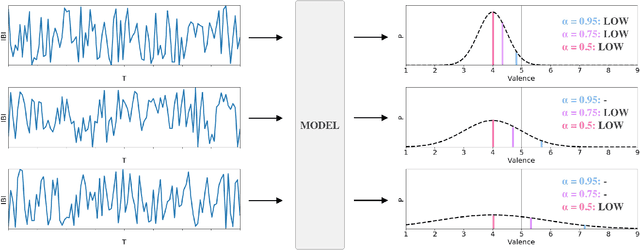
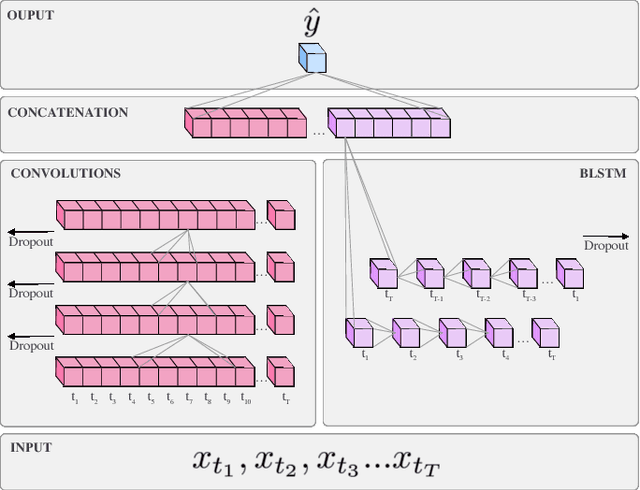
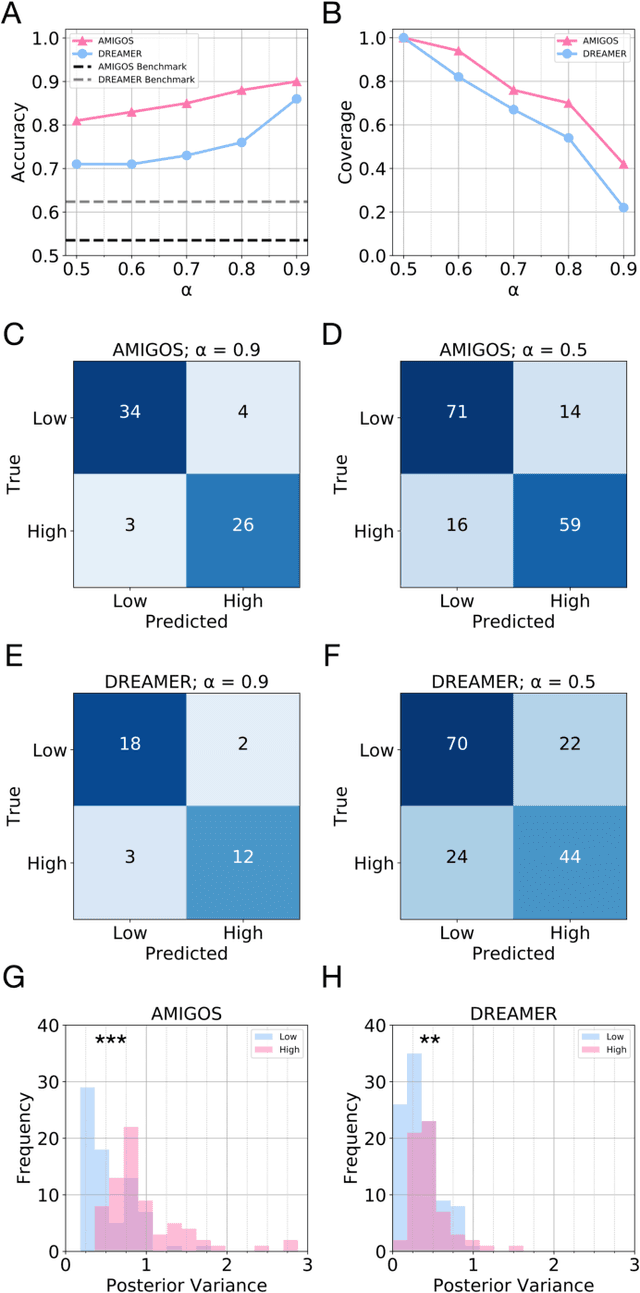

Abstract:Automatic prediction of emotion promises to revolutionise human-computer interaction. Recent trends involve fusion of multiple modalities - audio, visual, and physiological - to classify emotional state. However, practical considerations 'in the wild' limit collection of this physiological data to commoditised heartbeat sensors. Furthermore, real-world applications often require some measure of uncertainty over model output. We present here an end-to-end deep learning model for classifying emotional valence from unimodal heartbeat data. We further propose a Bayesian framework for modelling uncertainty over valence predictions, and describe a procedure for tuning output according to varying demands on confidence. We benchmarked our framework against two established datasets within the field and achieved peak classification accuracy of 90%. These results lay the foundation for applications of affective computing in real-world domains such as healthcare, where a high premium is placed on non-invasive collection of data, and predictive certainty.
 Add to Chrome
Add to Chrome Add to Firefox
Add to Firefox Add to Edge
Add to Edge